9 Animals from Madagascar


Written and verified by the biologist Francisco Morata Carramolino
In ancient times, Madagascar belonged to the supercontinent of Gondwana. Following its separation from Africa and India, it has become the fourth largest island in the world and has remained isolated for the past 160 million years. Thanks to this, the animals of Madagascar have evolved independently of the rest of the planet.
As a consequence, the fauna of Madagascar is quite unique. 100% of the amphibians of Madagascar are endemic. 90% of reptiles, 37% of birds and 66% of fish are also endemic. The same is true for mammals and macroinvertebrates, as most species can’t be found anywhere else.
In this article, we’re going to introduce you to some of the most iconic species on the island. Unfortunately, many of them are seriously threatened, as Madagascar’s natural resources are rapidly being destroyed by human activities.
The unique animals of Madagascar
These animals that we’re going to tell you about can’t be found anywhere else on the planet. Therefore, its conservation is a priority.
1. Aye-aye ( Daubentonia madagascariensis )
This nocturnal primate stands out for its peculiar appearance, with black fur, large yellow eyes, huge ears, and incisors that never stop growing. These animals are also striking because of their long, furry tail and strange hands.
The aye-aye’s fingers are extraordinarily long. With them, it repeatedly hits the bark of trees in search of insects to devour. Once it finds them, it breaks the bark with its teeth and uses its middle finger, much thinner than the rest, to remove the insect from its place.
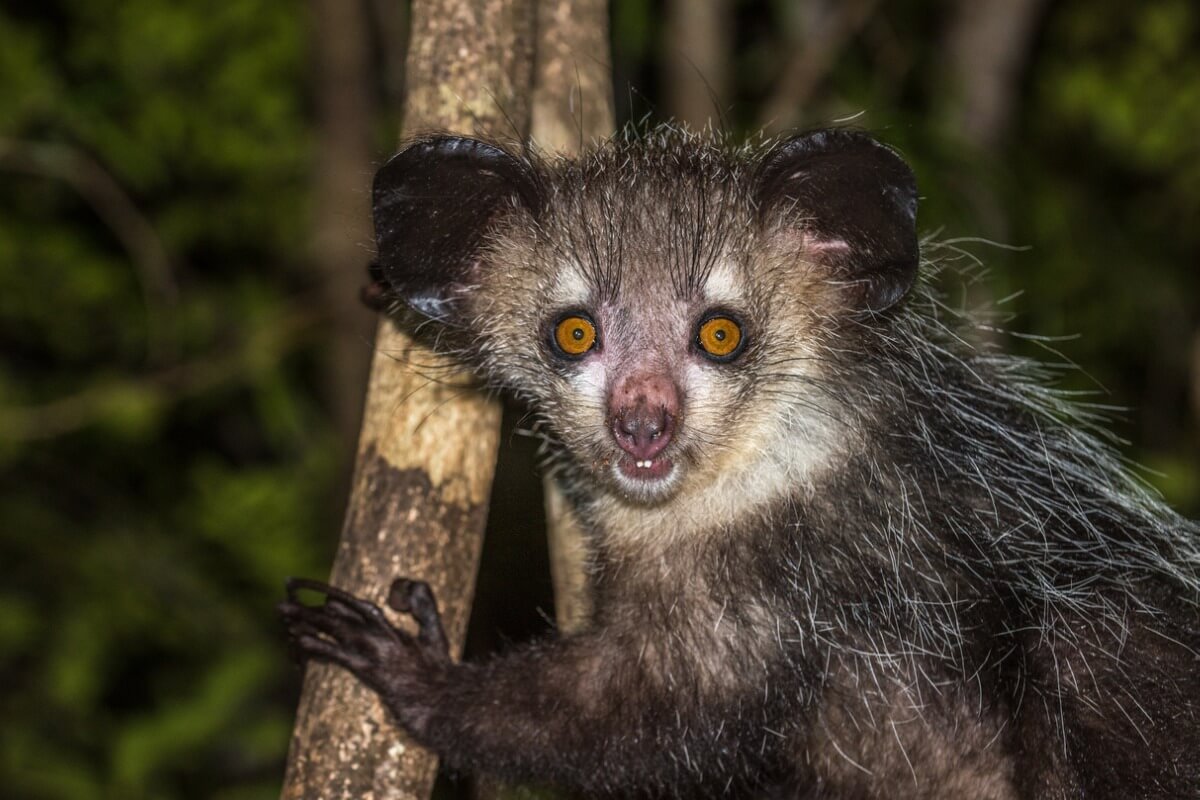
2. Panther chameleon ( Furcifer pardalis )
The panther chameleon is native to northern Madagascar. However, today it can be found in homes around the world, due to its popularity as an exotic pet.
These chameleons are characterized by their bright and striking colors, which vary from green to blue or red, depending on the population the animal belongs to, its mood, and other factors. Adults reach considerable sizes, up to 23 centimeters in length.
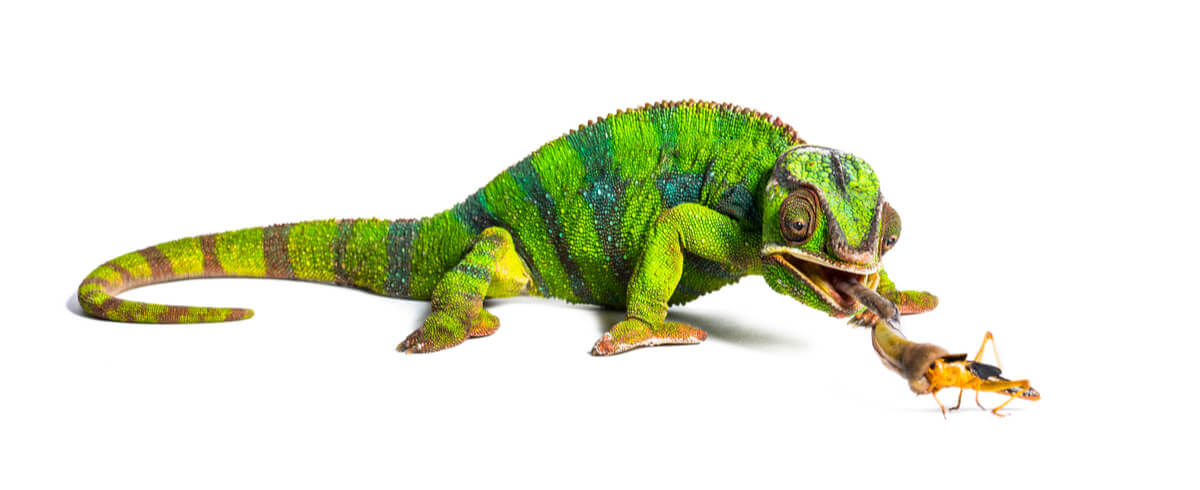
3. Satanic Leaf-tailed Gecko ( Uroplatus phantasticus )
This is another species of Malagasy arboreal reptile that, like the previous chameleon, has become very popular in the animal trade. Its appearance reflects a spectacular case of crypsis, through which the animal tries to resemble the surrounding environment in order to go unnoticed.
This gecko tries to camouflage itself as part of dry vegetation, with body structures reminiscent of it and a tail identical to a leaf. The bumps above its eyes give it a mischievous looking look.
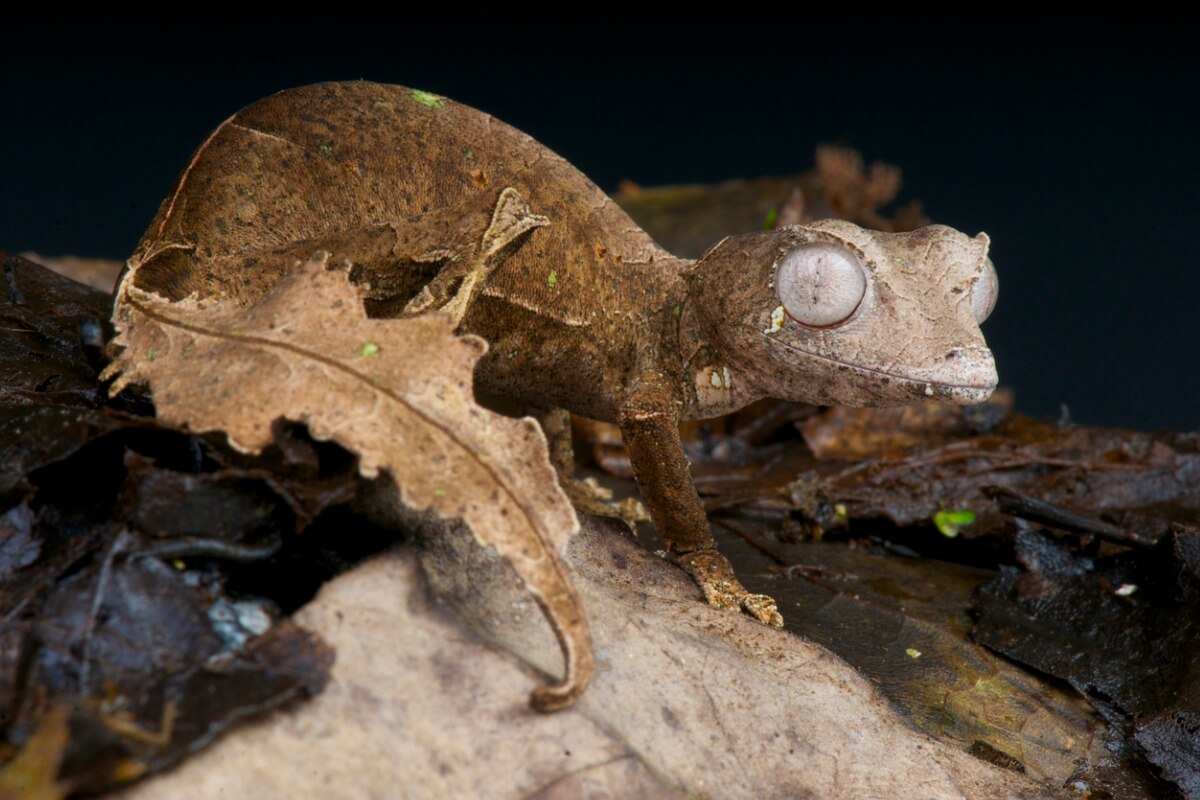
4. Tomato frog ( Dyscophus antongilii )
The name of this friendly anuran is as descriptive as it sounds. Dyscophus antongilii is a very round and quite large frog, with figures between 6 and 6.5 centimeters for males and 8.5 and 10.5 centimeters for females. Males are yellow or orange, but females are deep red, with a black line behind each eye.
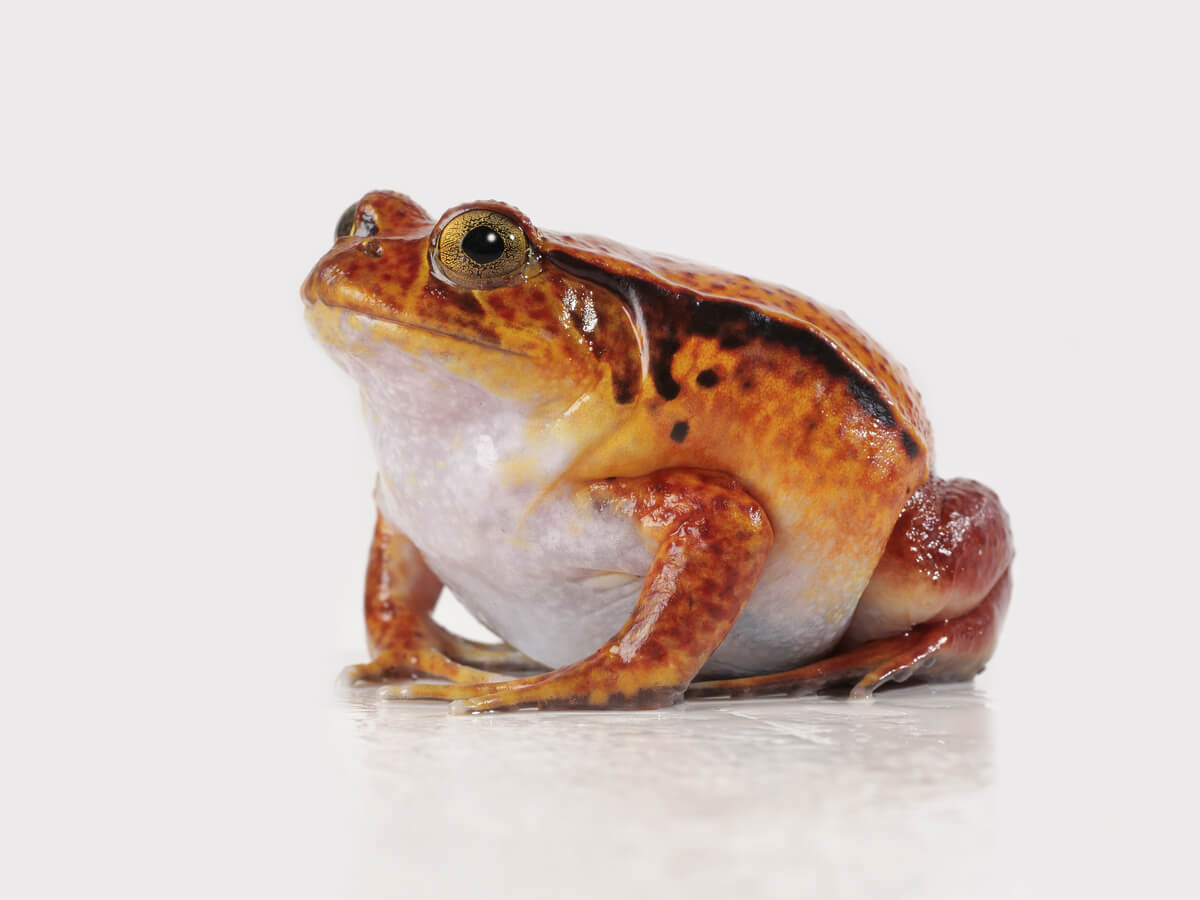
5. Cúa azul ( Coua caerulea )
This beautiful bird with navy blue plumage is distributed all over the island. Unlike other animals in Madagascar, it still has a good population. It belongs to the cuckoo family, but it doesn’t have the parasitic habits that characterize many of its other members.
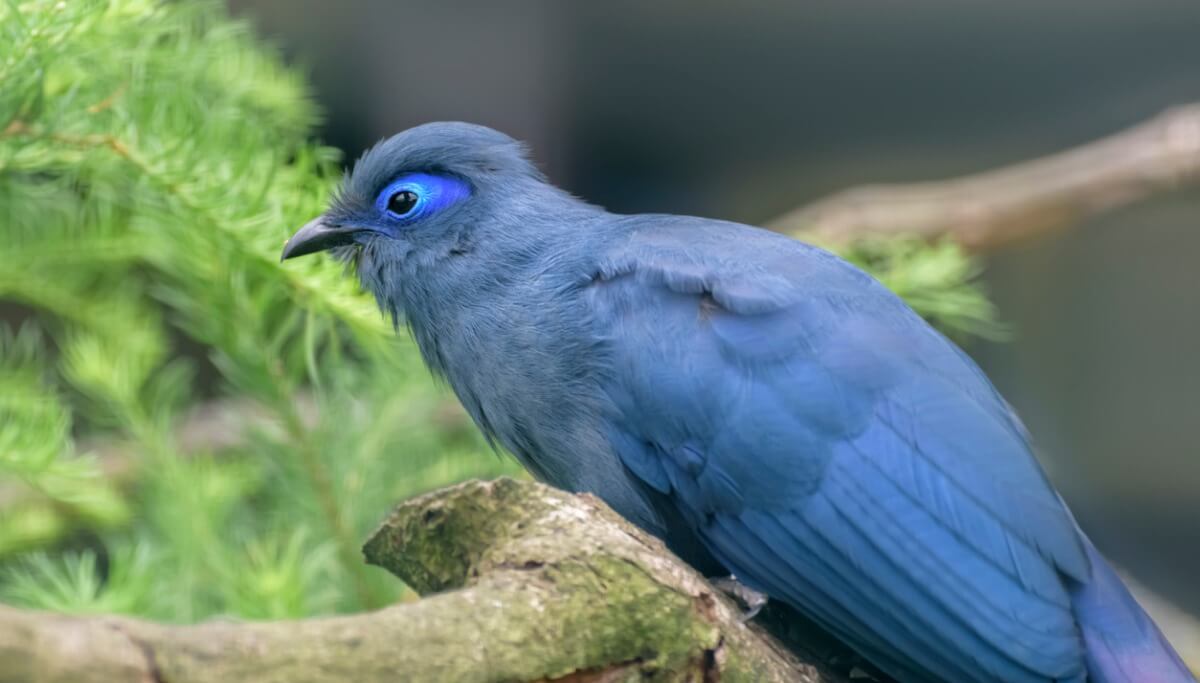
6. Indri (Indri indri)
The indri is the largest living lemur. It reaches between 50 and 70 centimeters and weighs up to 10 kilos. It’s very recognizable by its tiny tail and its white and black coloration, which depends on the area it lives in. The fur of the southern populations is whiter, while in the north the black is predominant.
These lemurs are diurnal. They jump and move between the branches with the help of their specialized limbs and feed mainly on leaves.
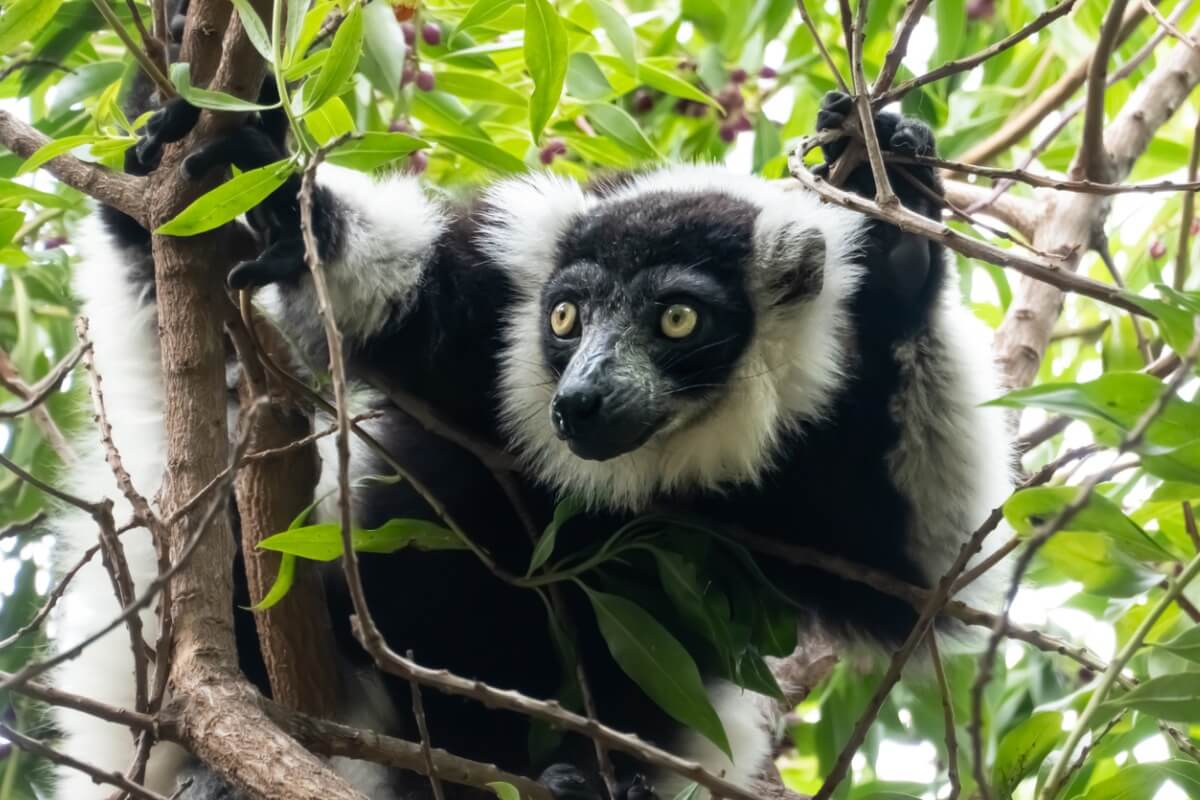
7. Giant Madagascar chameleon ( Furcifer oustaleti )
Madagascar contains the majority of the world’s chameleon species. Among them is Furcifer oustaleti, considered the representative of this largest group on the planet. Another Malagasy species competes with it: the Parson’s chameleon (Calumma parsonii). Both measure 70 centimeters, approximately.
Interestingly, this island is also home to the smallest chameleons in the world, which belong to the genus Brookesia. Insularity seems to favor extreme features both ways.
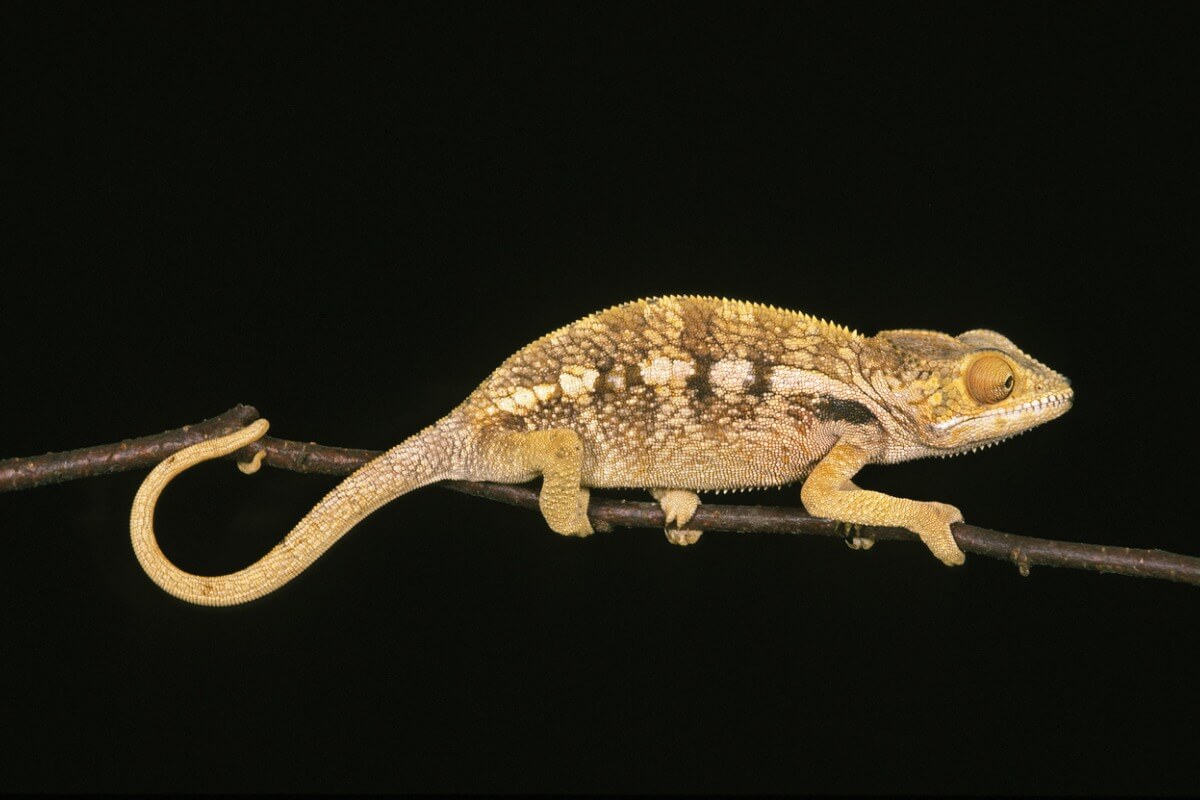
8. Tenrec lesser hedgehog ( Echinops telfairi)
These mammals are very similar to hedgehogs. Like them, they are small, rounded, and covered in spikes. Its legs are short, its ears are large and its snout is pointed.
However, tenrecs are not hedgehogs nor are they related to them. These Madagascar animals have independently developed these characteristics, making it an extreme case of evolutionary convergence.
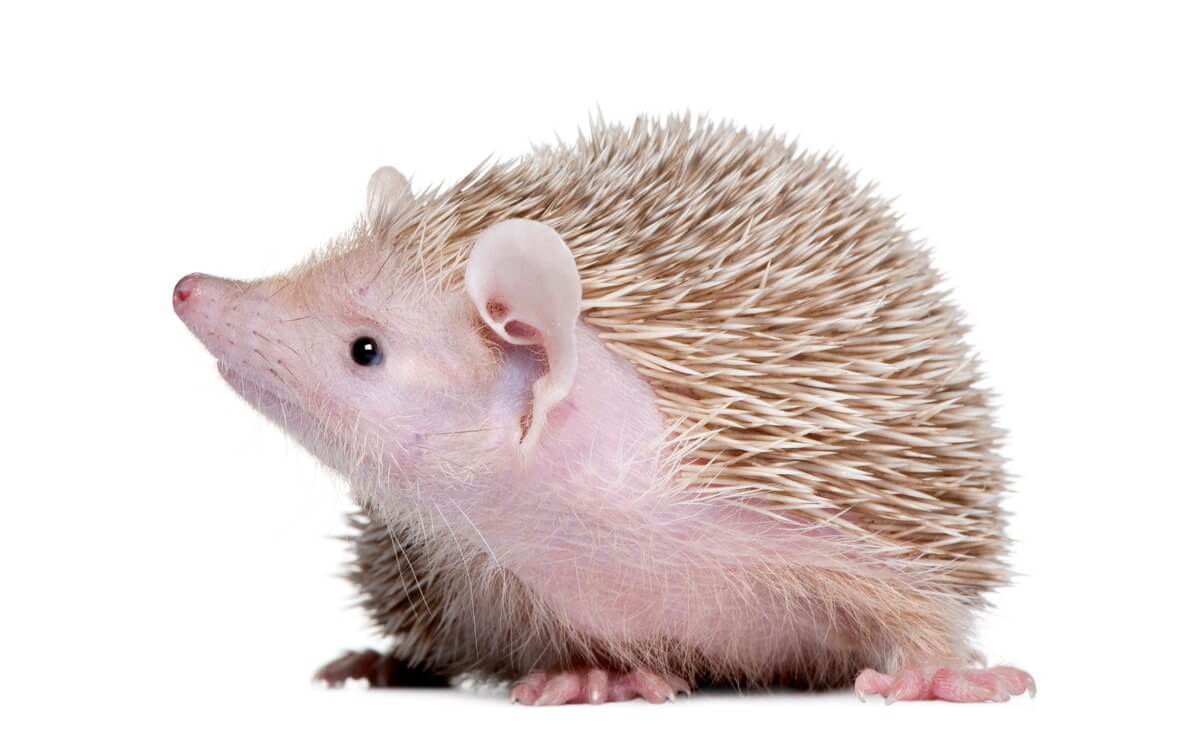
9. Fossa ( Cryptoprocta ferox )
The fossa is the dominant predator of Madagascar, measuring up to 1.80 meters in length and weighing 12 kilos. It belongs to the eupleridae family, carnivores related to mongooses. The fossa can be active both during the day and at night and are able to move on the ground or in the trees.
These animals feed on whatever prey they can catch, but their favorite food is lemurs. Without a doubt, they are at the top of the food chain in this ecosystem.
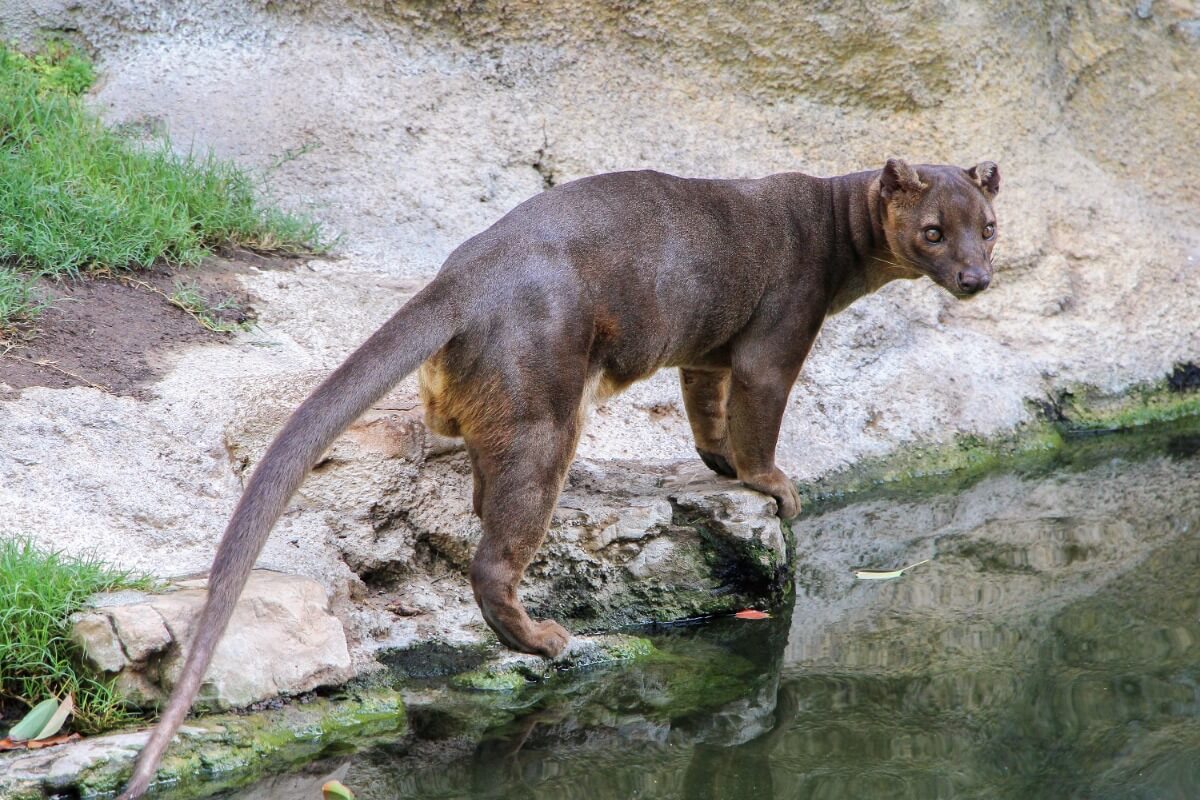
The fauna of Madagascar is one of the most interesting and unique in the world. Unfortunately, these animals are disappearing due to human actions. Agricultural practices, energy production, and mining, among other things, are destroying the forests that used to cover the island.
These practices are often due to the precarious and poor situation the local people live in. Protecting Madagascar’s diversity requires not only conserving animal and plant species, but also ensuring human well-being.
All cited sources were thoroughly reviewed by our team to ensure their quality, reliability, currency, and validity. The bibliography of this article was considered reliable and of academic or scientific accuracy.
- https://www.cbd.int/countries/profile/?country=mg
- https://www.worldwildlife.org/ecoregions/at0117
- https://www.nationalgeographic.com/animals/mammals/facts/aye-aye
- https://animaldiversity.org/accounts/Furcifer_pardalis/
- https://www.wired.com/2014/07/absurd-creature-of-the-week-satanic-leaf-tailed-gecko/
- https://amphibiaweb.org/species/5530
- https://birdsoftheworld.org/bow/species/blucou1/cur/introduction
- https://apespain.org/conoce-al-indri/
- https://www.wildmadagascar.org/wildlife/chameleons.html
- http://online-field-guide.com/Furciferoustaleti.htm
- https://tenrec.lima-city.de/Echinops_telfairi.htm
- https://www.nationalgeographic.com/animals/mammals/facts/fossa
- Richard, A. F., & Dewar, R. E. (1991). Lemur ecology. Annual Review of Ecology and Systematics, 145-175.
This text is provided for informational purposes only and does not replace consultation with a professional. If in doubt, consult your specialist.